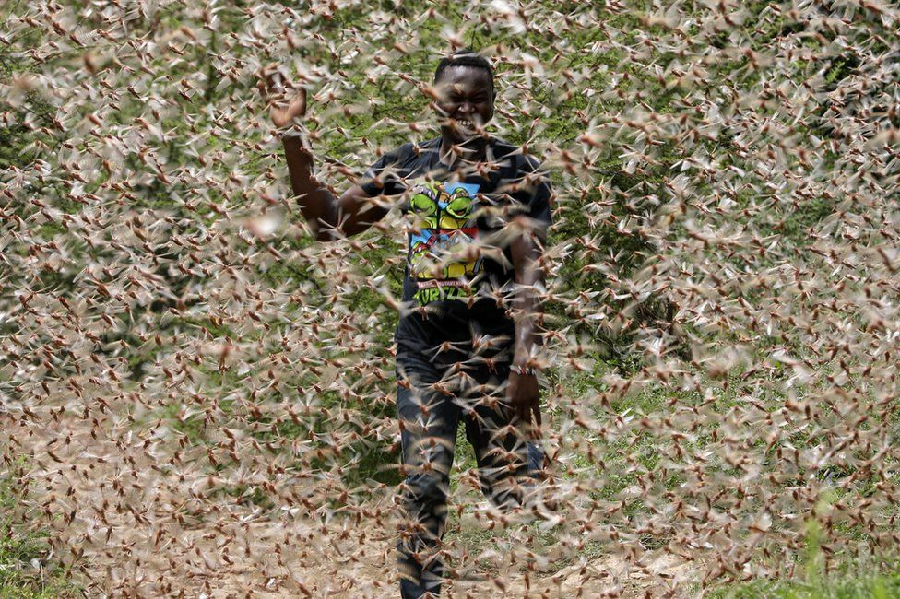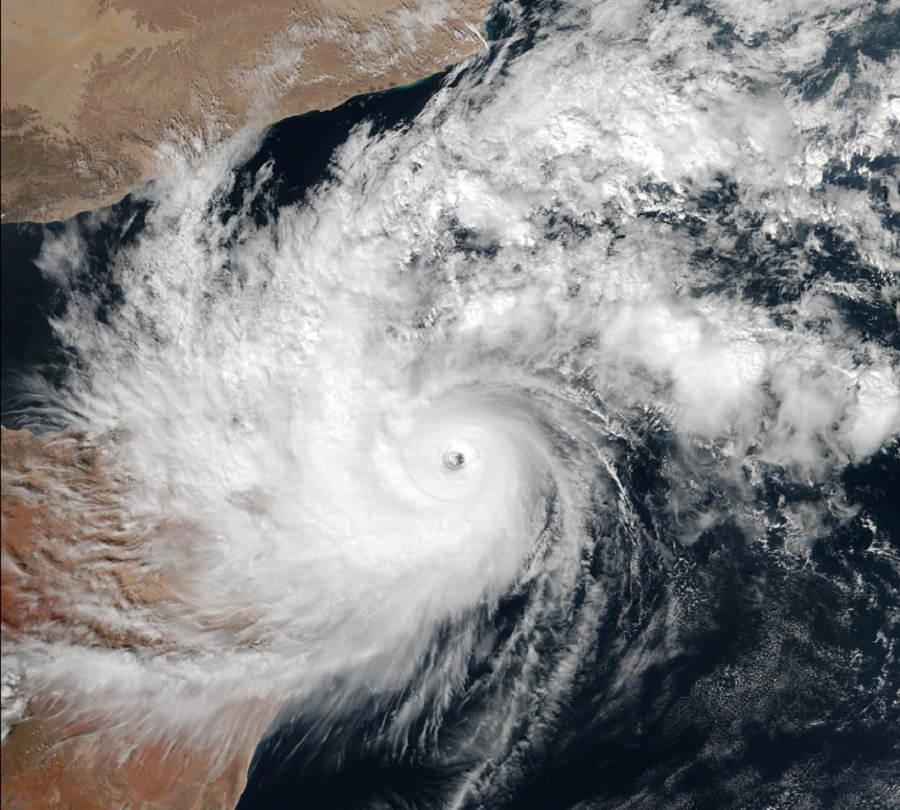
Swarms of locusts are taking flight over portions of Africa, turning the afternoon sky dark, prompting authorities to issue state of emergency declarations there. Similar to an outbreak that happened there last spring, local officials say the clouds of hundreds of billions of locusts are harming the food supply of people there.
Locusts are a collection of short-horned grasshoppers that go through a swarming phase. In great numbers, they can wipe-out crops, harming the food supply needed by people. According to the Food and Agriculture Organization (FAO) of the United Nations, locusts don’t attack humans or animals and there doesn’t seem to be evidence that they carry diseases that could harm humans. Nevertheless, because of their sheer number, it’s difficult to walk outside without getting locusts in your mouth, in your hair, and in your clothes.
This week, Namibia appears to be hit hard. Local elected official Immanuel Shikongo told the newspaper “The Namibian” that many crops have been destroyed there this week. Beyond eating crops that humans eat, they’re also decimating grasses that grazing animals depend on for their feed. In his interview with the newspaper, he said, “I would like to urge our people to yell and burn tyres when they see locusts in their mahangu fields.” Local police have also been using their sirens to help spook the locusts away.
Swarms of locusts impacted Angola earlier this month, Kenya in March, and Somalia in February.

Wet weather could be to blame for the locust outbreaks. Experts believe that tropical cyclones that left portions of the continent wetter than usual in 2018 followed by warmer than usual temperatures in 2019 helped spawn the massive population of locusts that hit eastern Africa, portions of the Middle East, and southeastern Asia last year. In November of last year, Very Severe Cyclonic Storm Gati made landfall in Somalia, making it the most powerful tropical cyclone to make landfall there. Scientists believe the moisture left behind by the massive storm helped create the locust problem that exists today.
“At no other point in history have agri-food systems confronted such an array of new and unprecedented threats, including megafires, extreme weather, unusually large desert locust swarms, and emerging biological threats like the COVID-19 pandemic,” FAO said.
“These hazards not only take lives but also devastate agricultural livelihoods and inflict cascading negative economic consequences… that can endure for generations,” it added.